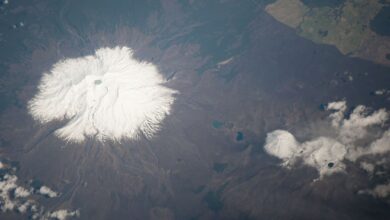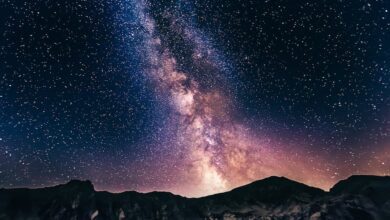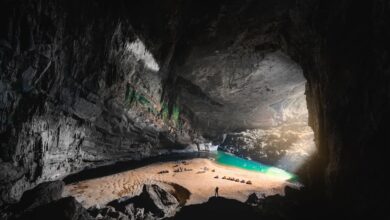How Are Mountains Formed?
Have you ever just stopped what you were doing to soak in the breathtaking scenery around you? Awe-inspiring landscapes exist in the natural universe, from vast seas and thick forests to open plains and undulating hills.
Nevertheless, a magnificent mountain range is perhaps one of the most breathtaking natural phenomena on the planet. Something about the lofty, jagged peaks of the Himalayas and the Rocky Mountains inspires terror.
However, have you ever pondered how mountains formed? They appear to have landed in an odd place; did they fall from the sky? Just nearly! Keep reading to get the facts on mountain formation.
How Are Mountains Formed?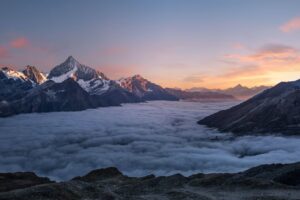
Movements deep inside the Earth’s crust give rise to mountains. Several massive plates, known as tectonic plates, make up the crust and are capable of moving independently of one another.
These massive pieces of the Earth’s crust shift and clash with one another over time because they float in a fluid rock known as magma. Since these motions are so gradual and the size of each plate is so massive, crust-dwelling individuals seldom feel them.
The movement of plates is what generates changes in the geographical structure of the surface of the planet, thus these movements nevertheless have significant effects on human existence. So, gradually, mountains are formed in this way.
When these plates contact, the Earth bends or protrudes because of the tremendous mass and pressure that abruptly stops. There are three different types of mountains that may be generated due to the movement and collision of these plates.
Volcanic mountains, folded mountains, and block mountains are the three main categories of mountains and mountain ranges.
Different Types of Mountains and How Are They Formed
In this section, we will take a look at different types of mountains and how they formed. Each mountain type has its own history of formation. Let’s take a look at each of the types.
Volcanic Mountains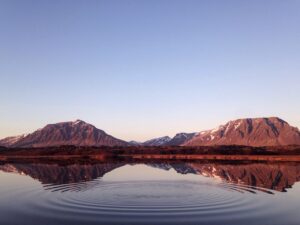
Magma is driven to the surface when one tectonic plate moves beneath another (or above a mid-ocean ridge or hotspot), creating volcanic mountains. Magma that rises to Earth’s surface typically forms a volcanic mountain, such as a shield volcano or a stratovolcano.
Mount Fuji in Japan, Mauna Kea in Hawaii, Nyamuragira in the Democratic Republic of the Congo, Skjaldbreiur in Iceland, and Mount Etna in Sicily are all examples of such mountains.
Dome mountains are formed when magma solidifies under the surface and is forced upward by weight accumulation. Navajo Mountain, located in Utah’s San Juan County, the Chaitén lava dome in Chile, Torfajökull in Iceland, and Mount St. Helens in Washington are all good examples of this type of volcanic dome.
Cinder Cones
Cinder cone mountains are formed when ash is released from a volcanic vent and eventually falls to the ground. Because of the accumulation of lava and ash, these mountains tend to be more angular and abrasive in appearance.
Volcanic hotspots and plate rifts aren’t the only places on Earth where you may find cinder cones.
Turkey’s Kula and Karapina cones, the Philippines’ Taal mountain, Iceland’s Hverfjall, Mexico’s Paricutin and Pinacate, Australia’s Luera, Fox, and Elephant mountains, Ethiopia’s Manda-Inakir, Djibouti, and a smattering of smaller cones in British Columbia, Oregon, and California are all in the running.
Cerro Negro, the most active cinder cone volcano in the world, is located in Nicaragua.
Fold Mountains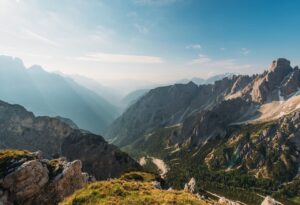
Fold mountains form when the crust is over-thickened as a result of the collision of two tectonic plates at a convergent plate boundary.
Material is pushed upward to create hills, plateaus, and mountains, while a greater amount is pushed down into the mantle, causing the less dense crust to float on top of the heavier mantle rocks.
The Jura Mountains in the Alps are a good example of a fold mountain range because of the way its ridges converge rather than diverge.
The Zagros Mountains, which stretch from northern Syria and southern Turkey to eastern Iran and the Persian Gulf, are another such example of a “Simply Folded Belt.”
Also, there are the Appalachian Ridge and Valley Mountains in the East United States, and the Akwapim-Togo mountains in Ghana.
The Himalayas, a mountain range straddling northern India and Nepal, are arguably the most well-known.
The highest peak on Earth, Mount Everest, is part of this chain, which originated as a consequence of a collision between the Indian subcontinent and Asia about 25 million years ago.
Shield Mountains
Shield mountains are another category of volcanoes. A shield volcano is a composite or stratovolcano. Over long periods of time, mountains can be created in this way.
These mountains, like all others, form, when magma escapes to the Earth’s surface through vents or fractures, although the process is often more gradual, resulting in lava, flows rather than explosive eruptions.
Viscous rivers of lava seep from fissures, cool, and harden into solid rock on the surface. Whether these flows are swift or sluggish, they always leave behind a trail of rock that may be seen thousands of years later. This process resulted in the formation of some of the world’s most recognizable mountains.
Volcanic mountains may be found in every corner of the globe, and numerous island chains, like the majority of Hawaii, are composed entirely of volcanic rock. Famous Mauna Kea is a shield rock that is encircled by about a hundred cinder cones.
Block Mountains
Faults in the crust, or a seam through which rocks may slide past one another, are the root cause of block mountains. Another name for this phenomenon is “rifting,” which describes the lifting of rocks on one side of a fault in comparison to the other.
When blocks are raised, they form block mountains (sometimes called horsts), and when blocks are dumped in between, they form graben (i.e. depressed regions).
The Upper Rhine valley, the French Vosges, the German Black Forest, and the Indian Vindhya and Satpura horsts are all good examples of this sort of topography.
The East African Rift is another notable feature, spanning the length of the continent from Eritrea to Mozambique.
Mountain Erosion
Erosion, as said, is the process through which mountains are produced in their ultimate stage. This happens both during and after an uplift when the forces of wind, water, ice, and gravity are exerted on a newly created mountainous terrain.
The exposed surfaces of mountains are worn down by these pressures, silt is deposited in alluvial flows, and distinctive landforms are formed.
Pyramidal summits, arêtes with sharp edges, and cirques with bowl shapes are all examples. Erosion of an elevated plateau gives rise to plateau mountains like the Catskills. Furthermore, mountains may eventually disappear due to erosion after millions of years.
Conclusion
Mountains are elevated rocky masses that form naturally in the Earth’s crust. A mountain range might take the form of a belt of related mountains or a single, isolated peak. The definition of a mountain’s height is independent of geological study.
Hills can also refer to lesser mountains. Although their sizes and names vary, they all originate from the earth’s tectonic activity. It was all about how mountains are formed and what are the different types of mountains.
Visit the other articles to learn more about the mountains.
